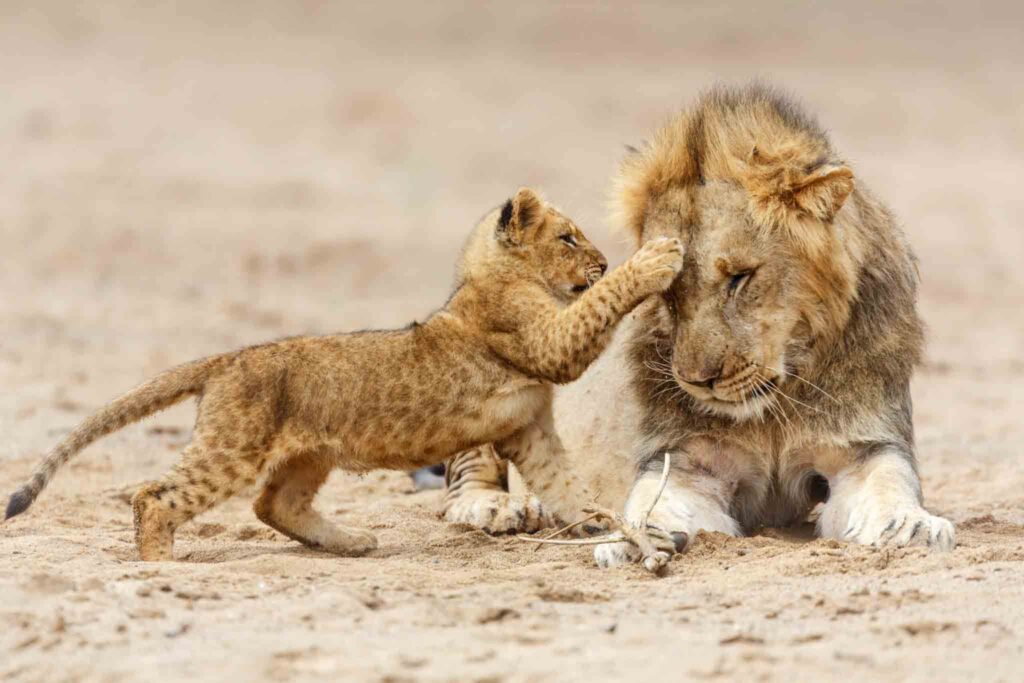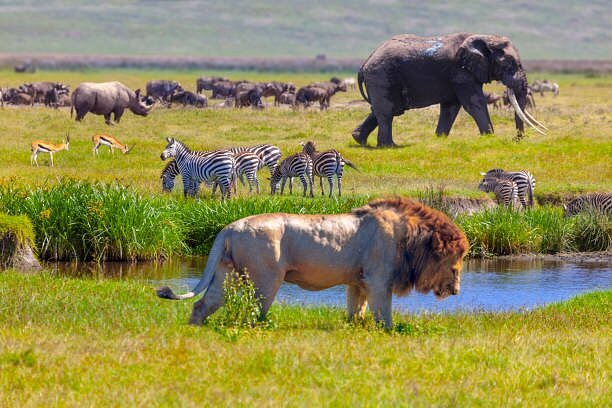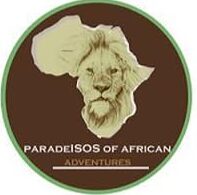The Serengeti is a vast, iconic savanna ecosystem covering approximately 30,000 square kilometers (11,583 square miles), spanning northern Tanzania and extending into southwestern Kenya where it connects with the Maasai Mara. It is part of a larger Serengeti ecosystem that also includes the Ngorongoro Conservation Area, the Grumeti Reserve, and other protected lands. Renowned for its sweeping grasslands, acacia-dotted plains, and seasonal rivers, the Serengeti is a UNESCO World Heritage Site and one of the most celebrated wildlife regions on Earth.
One of its most astonishing spectacles is the Great Migration—a year-round movement of over 1.5 million wildebeest, 200,000 zebras, and hundreds of thousands of gazelles in a circular route across the plains in search of fresh grazing and water. This epic journey, often regarded as the largest land animal migration in the world, involves dramatic river crossings, where herds brave crocodile-infested waters, and constant threats from predators.

The Serengeti is home to an extraordinary range of animals, including:
Big Five: Lions, leopards, elephants, buffalo, and rhinoceroses—iconic and sought-after by wildlife enthusiasts and safari-goers. The Serengeti is particularly famous for its large lion population, one of the densest in Africa.
Other predators: Cheetahs, hyenas, jackals, and servals. The open plains provide ideal hunting grounds for cheetahs, while hyenas play a crucial role as scavengers and opportunistic hunters.
Herbivores: Wildebeest, zebras, giraffes, gazelles, impalas, elands, topis, hartebeests, and warthogs. These animals are vital to the food chain and help shape the ecosystem through grazing patterns.
Birdlife: Over 500 species, including ostriches, secretary birds, vultures, eagles, flamingos (near seasonal lakes), hornbills, and various weavers and songbirds. The rich avian diversity makes the Serengeti a paradise for birdwatchers.
In addition to its ecological significance, the Serengeti holds deep cultural importance. The Maasai people, traditional pastoralists, have lived in harmony with the land for generations and continue to be stewards of the ecosystem.
The Serengeti is not only a symbol of raw natural beauty and ecological wonder but also a critical area for conservation, scientific research, and sustainable tourism.

🌍 What is the Serengeti?
The Serengeti is a vast ecosystem in East Africa, primarily located in northern Tanzania, with parts extending into southwestern Kenya. The name “Serengeti” comes from the Maasai word “Siringet”, meaning “the place where the land runs on forever.”
📍 Geography and Location
Total area: ~30,000 km² (11,600 sq mi)
Countries: Mainly Tanzania, partly Kenya
Main Protected Area: Serengeti National Park (Tanzania)
Connected Ecosystems:
Ngorongoro Conservation Area
Masai Mara National Reserve (Kenya)
Grumeti Game Reserve, etc.
🐾 Wildlife
The Serengeti is one of the most biologically diverse ecosystems on Earth. It’s especially famous for:
🦓 The Great Migration
Over 2 million animals migrate annually:
~1.5 million wildebeest
~300,000 zebras
~500,000 gazelles
They move in a circular route across the Serengeti and Masai Mara, driven by seasonal rains in search of fresh grazing land.
This is one of the Seven Natural Wonders of Africa.
🐘 Other Iconic Animals
The Big Five: Lion, Leopard, Elephant, Buffalo, Rhinoceros
Giraffes, Hippos, Crocodiles, Cheetahs, Hyenas, Jackals, and hundreds of bird species
🌱 Ecosystems
The Serengeti includes:
Savannah grasslands (most iconic)
Woodlands
Riverine forests
Swamps
This diversity supports a huge variety of animals and plants.
🛡️ Conservation
Serengeti National Park (est. 1951) is a UNESCO World Heritage Site.
It’s a protected area, but nearby regions like the Masai Mara also play crucial roles.
Threats: Poaching, human encroachment, climate change
Active conservation efforts include:
Anti-poaching patrols
Wildlife corridors
Community-based tourism
⛺ Tourism
One of the top safari destinations in the world
Activities:
Game drives (day & night)
Hot air balloon safaris
Photography
Guided walking safaris
Cultural visits to Maasai villages
Best Time to Visit: Depends on what you want to see!
June–October: Dry season, best for game viewing
December–March: Calving season (incredible predator action)
July–August: Wildebeest river crossings (dramatic!)
🧭 Fun Facts
Home to the largest lion population in Africa
Olduvai Gorge, an important archaeological site for human origins, is nearby
Featured in countless documentaries like BBC’s Planet Earth and Serengeti
